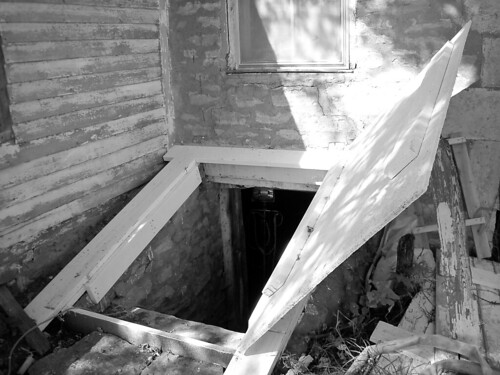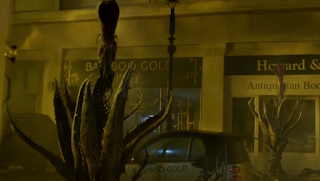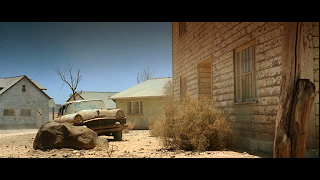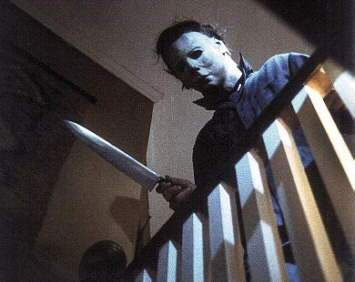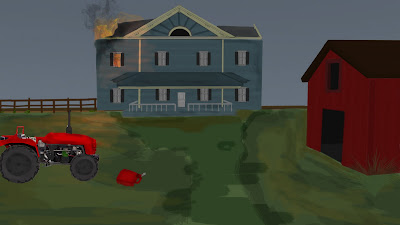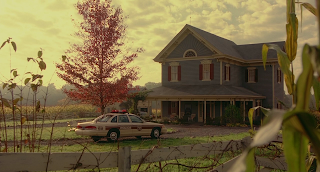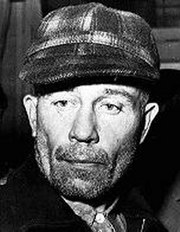As I'm creating a Maya scene that is taking from a rural American setting I've been watching some Horror films that use the same setting. I'm going to eventually write about The Texas Chainsaw Massacre and The Hills Have Eyes,but first I'm going to re-visit 'Halloween'.
Unfortunately, they are both the remakes, as I've yet to watch the original 'The Hills Have Eyes'. I was going to watch it tonight, but all my House-mates have gone home for Christmas and seeing it home alone may drive me to delusion and I'll start seeing mutants in my kitchen.
I'm also reading the following book :' The American Horror Film : An Introduction' which explains the themes and the sub-genres of horror films including Dracula, the living dead, the Mummy, Slasher movies etc. I'm finding it really interesting as the author brings out themes and meanings to films which I would never have thought existed and wouldn't have uncovered myself.
The chapter most relevant to this unit that I've read so far is the chapter on Slasher movies, which brings up the idea of the 'Final Girl'. Using ideas from a book by William Paul (Laughing Screaming: Modern Hollywood Horror And Comedy), the chapter talks in-detail about the meanings behind 'Halloween'. The perspective that it goes into detail about is how the killer, 'Micheal' in the film is propelled by social exclusion and alienation, which when explained in terms of each scene, does make a good case.
Firstly, the idea of the 'Final Girl' (Laurie) being the purest and most innocent doesn't relate to the killer in 'Halloween'. Laurie's friends, who are portrayed as being 'Guilty' in the film for taking drugs and having sex are 'punished' by being killed, but this must be a mechanism for the audience rather than for the killer. The reason for this, as the book explains, is in the first scene of the film. Micheal, who is only six years old, murders his sister who is babysitting him, moments after she is implied to have had sex with her boyfriend. However, at his age he cannot be punishing her for that act, as William Paul says: '
Reading sexual desire into this without accounting for the age of the child seems to me only slightly less perverse than the sequence itself'. Micheal only went upstairs after the two teenagers had finished the act , after the boyfriend has left .The book argues that we need to go further to understand the film and the killer's motivation (Which as Phil mentioned, may just be his nature, that he needs no motivation at all to kill)

Another idea then is brought in, regarding the mask. Michael wears a clown's mask when killing his sister,which the author argues is of great importance.His sister must recognise him, meaning it was not a way for him to cover his identity (In-fact I think I remember her saying "Michael, What are you doing?" when he entered the room.) This then means, that the mask was not for her sake, but for his. It may symbolise Michael's refusal to be looked at and to let anyone into his thoughts and his identity. It is then expanded with the ideas of society. William Paul argues that this insists Micheal feels abandoned, he begins the film wandering outside, meaning his sister has neglected him for her own desires, showing a sign of social alienation in the boy. This also appears in the camerawork as in the first few shots we are in a first-person view of Micheal's seeing what it is like to walk the streets alone, this continues through the house, until Micheal begins to kill his sister, then the view changes, meaning we are watching the murder instead of participating.
William Paul also assigns this to the occasions of Micheal being dead and then returning alive. He links this to failure in society, creating an imaginary position in a real American social system with each time Micheal being killed or 'rejected' being metaphors for loneliness and abandonment.
This really gave me an insight into what was being acted on 'behind' the obvious scenes of the film. Even if the themes above weren't intended, they definitely can be interpreted in this way. I might be looking to far into this, but I find it interesting anyway. I'll post up my captures of Texas Chainsaw Massacre and The Hills have Eyes for my scenes later on.
